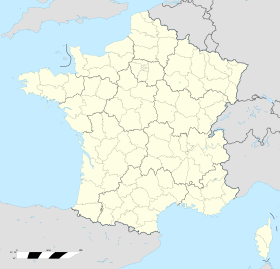Ouvrage Coucou
| Ouvrage Coucou | |
|---|---|
| Part of Maginot Line | |
| Northeast France | |
| Coordinates | 49°20′00″N 6°23′35″E / 49.33333°N 6.39306°E |
| Site information | |
| Owner | Private |
| Controlled by | France |
| Open to the public |
No |
| Site history | |
| Materials | Concrete, steel, deep excavation |
| Battles/wars | Battle of France, Lorraine Campaign |
| Ouvrage Coucou | |
|---|---|
| Type of work: | Small artillery work (Petit ouvrage) |
|
sector └─sub-sector |
Fortified Sector of Boulay └─Hombourg-Budange |
| Work number: | A20 |
| Regiment: | 164th Fortress Infantry Regiment (RIF) |
| Number of blocks: | 2 |
| Strength: | 3 officers, 113 men in June 1940 |
Ouvrage Coucou is a lesser work (petit ouvrage) of the Maginot Line, located in the Fortified Sector of Boulay. The ouvrage consists of two infantry blocks, and is located between the gros ouvrages of Hackenberg and Mont des Welches, facing Germany, just north of Kemplich.
Coucou was approved for construction by CORF (Commission d'Organisation des Régions Fortifiées), the Maginot Line's design and construction agency, in June 1930 and became operational by 1935, at a cost of 12 million francs. The contractor was Enterprise de Travaille de Fortification.
Coucou is a petit ouvrage with two combat blocks, overlooking the village of Kemplich. The blocks are linked by an underground gallery with barracks and a utility area (usine). The galleries are excavated at an average depth of up to 30 metres (98 ft).
In addition, the ouvrage was linked to the Abri du Coucou by an 80-metre (260 ft) underground gallery. The above-ground infantry shelter was armed with two GFM cloches and five automatic rifle embrasures. It possessed its own generating plant. Other nearby posts include:
An observation block was planned for a second phase, never executed, directly over the caserne.
In June 1940 the garrison comprised 113 men and 3 officers of the 164th Fortress Infantry Regiment (RIF). The commanding officer was Chef d'Escadron Ebrard until 13 June 1940, succeeded by Captain Roques.
The Casernement de Veckring provided peacetime above-ground barracks and support services to Coucou and other positions in the area.
Coucou played no significant role in either the Battle of France in 1940 or the Lorraine Campaign of 1944. After the Second World War it became part of the Mòle de Boulay, a strongpoint in the northeastern defenses against Soviet attack. Coucou remained under Army control until after 1971, when it was declassified and sold.
The property is privately owned.
...
Wikipedia

